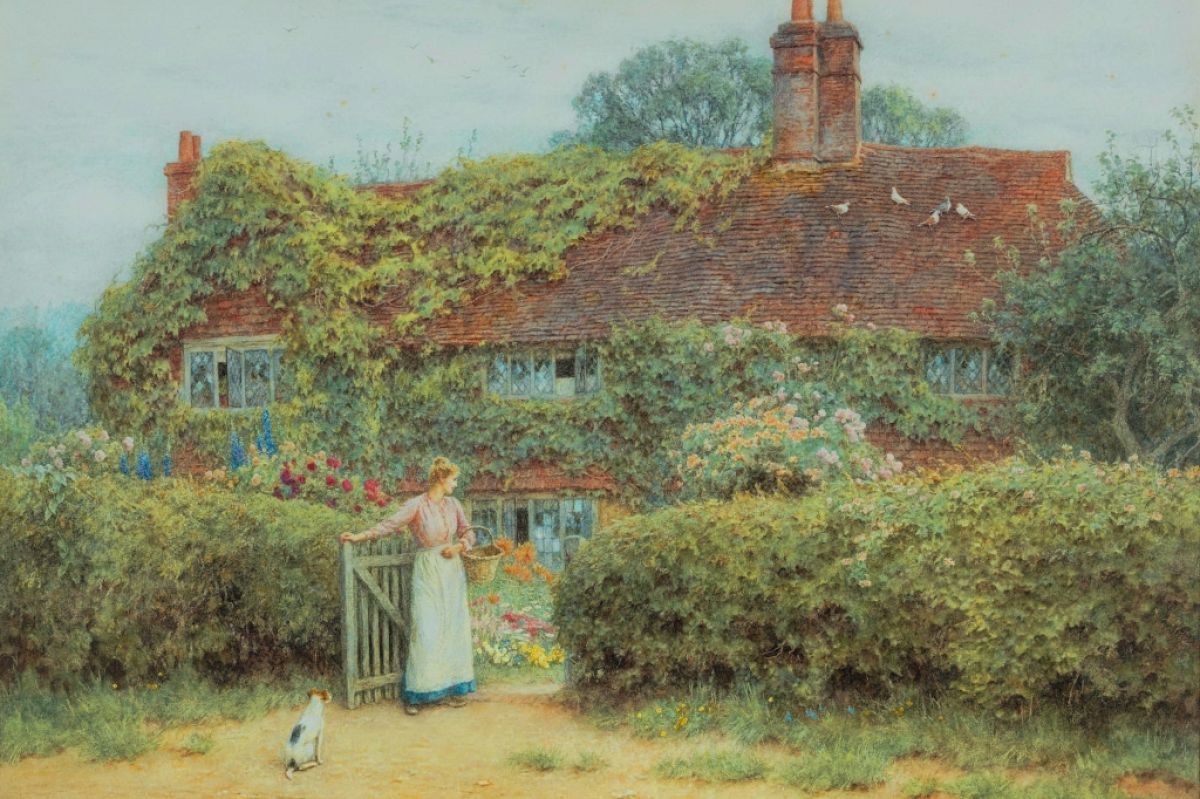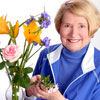Painters such as Myles Birket Foster and Arthur Claude Strachan painted sentimental scenes depicting a perfection that exceeded the norm for rural habitations at that time. Think about the pictures that were on boxes of chocolates, or on the covers of children's books in times past. It was an idealized version of English country life that members of the Arts and Crafts Movement, such as William Morris, aspired to. Happy Children played, flowers bloomed profusely in small spaces, every brick wall was festooned with climbing roses, every child was smiling, and no weeds were allowed among the sweet peas, asters, Canterbury bells, and violets.
The painter Helen Allingham, a friend of Gertrude Jekyll, painted gardens that were slightly more authentic. She painted outdoors, on site, so was more in touch with reality than her contemporaries. Her scenes were usually in Surry or Sussex. However, the majority of English 19th-century watercolorists maintained the myth of serene, thatched cottages surrounded by perfect, picturesque country gardens.
This is Moya Andrews, and today we focused on English rural paintings.










